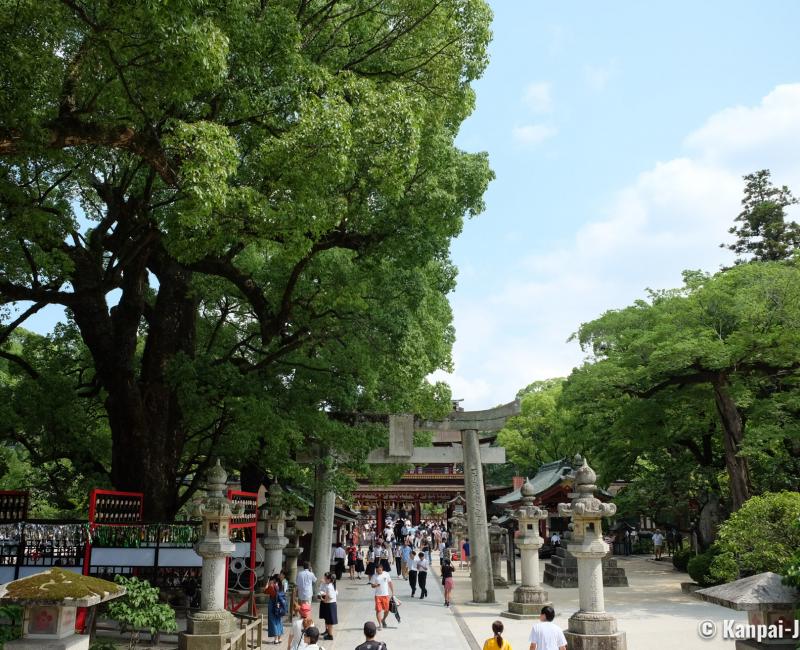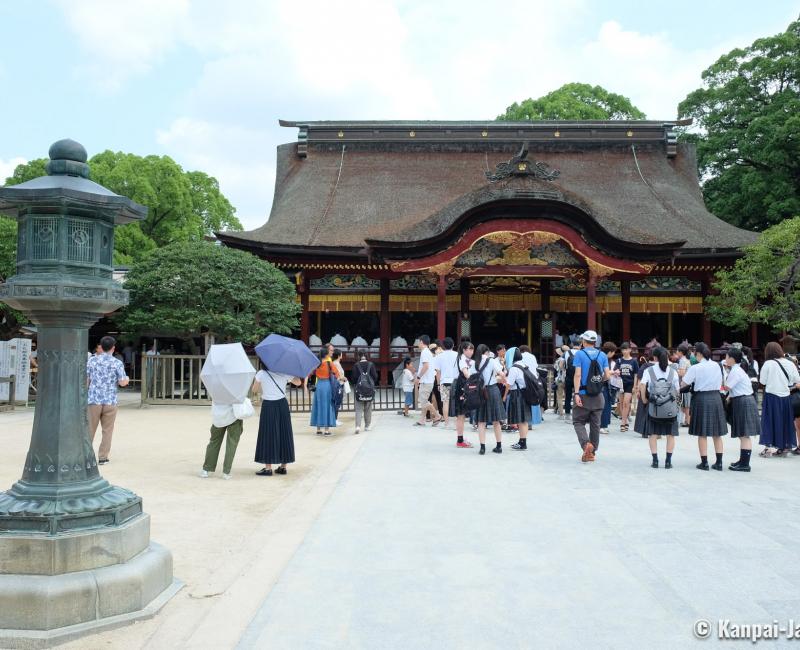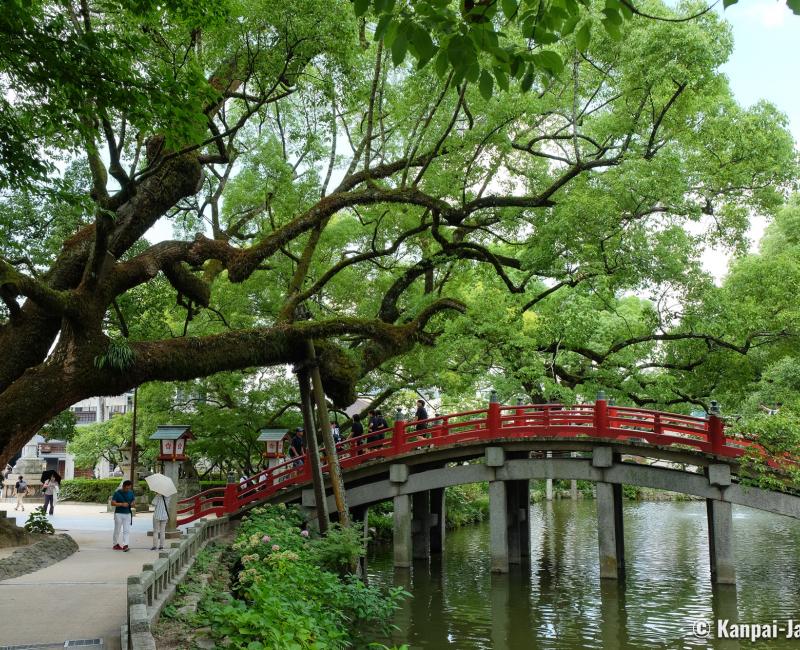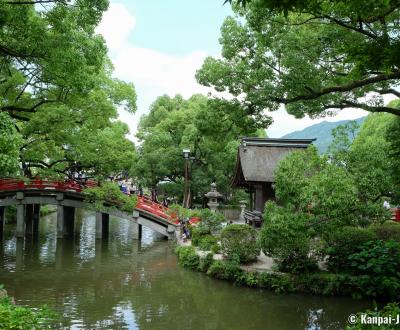Dazaifu Tenmangu
The Shinto Pilgrimage in Fukuoka
Dazaifu Tenmangu is a large Shinto shrine in the eponymous historical city, located in the south-east of Fukuoka. It was founded to enshrine Sugawara no Michizane, deified as Tenjin kami. It is lively all year round thanks to the people who come to pray for academic success and the sightseers discovering an important regional site.
Closing of the honden main hall in 2023 for renovation works planned as the following:
- From February to mid-May 2023: construction of an ephemeral vegetal hall in front of the main hall, designed by contemporary Japanese architect Sou Fujimoto and inspired from the legend of Tobi-ume the flying plum tree;
- From mid-May 2023: beginning of the large scale renovation works that are expected to last 3 years. The reopening ceremony is scheduled in 2027.
There are about 12,000 Tenmangu shrines throughout Japan, but Dazaifu’s is the most important of the archipelago as it was the first constructed, along with Kyoto’s Kitano Tenmangu.

Sugawara no Michizane or kami Tenjin
The shrine is dedicated to the memory of Sugawara no Michizane (845 – 903), an intellectual and statesman of the Heian period (794 - 1185). In his younger days, he developed remarkable skills for poetry and began to write early, as soon as 11 years old. Later, his political career developed quickly and his influence even reached the Imperial Court, that was controlled by the Fujiwara clan at the times.
His dazzling ascend sparked a rivalry with the Fujiwara’s and eventually caused him to be exiled from the capital Heian-kyo (now Kyoto) to Dazaifu’s governmental office on Kyushu Island in 901. Soon after his death, the country was plagued by natural disasters and the population put the blame on Michizane’s wrathful spirit looking to avenge his unfair treatment. Dazaifu Tenmangu shrine was consequently built at the very location of Michizane’s tomb. Later, he was deified under the name Tenjin-sama, the kami overseeing studies, culture and academic success.

A symbolic place of Shinto worship
Japanese people come in number to make offerings to Michizane for soothing his spirit and to pray Tenjin for his favors in the yearly exams. The shrine’s grounds is rather wide, but it is not unusual for it to be very crowded. School-trip children mingle with tour operator’ coachloads of tourists, mainly from Asia. Everybody abide by the same rituals:
- Pet the dozen of Shingyu ox statues (Tenjin’s divine messenger)
- Cross the taiko-bashi vermilion arch bridges that symbolize the past, the present and the future,
- Pray before the honden main hall, constructed in 1591; and,
- Wait in line to buy amulets, ema votive plates or receive the shrine’s goshuin seal in a dedicated notebook.
Dazaifu Tenmangu is a very popular and lively shrine where many celebrations and ceremonies are held throughout the year. About 10 million visitors wander in its alleys each year. If you are looking for religious contemplation, make sure to come in early morning, as soon as the gate opening at 6 a.m.

Spiritual site with iconic camphor and plum trees
Located in Dazaifu’s downtown, it is easily accessible from Monzen-machi shopping street. The crowd of local and touristic shops all sell the umegae mochi, a glutinous rice confectionery of which the Japanese are fond. Despite its urban surroundings, the shrine still retains a century-old lush vegetation.
A hundred of camphor trees grow along Dazaifu Tenmangu’s alleys. Their age can be appreciated thanks to their trunks’ circumference and their superb height. They help refreshing the atmosphere in summer and are pleasant to admire. Most of them are sacred and girdled by a thin shimenawa cord.
Additionally, more than 6,000 ume plum trees (or Japanese apricot) grow in the shrine’s grounds. Beloved by Sugawara no Michizane for their beauty and their delicate fragrance, these ornamental trees embellish the visit during their blooming season from late January to the end of March. The plum tree on the right of the main hall was named Tobi-ume, the "flying plum tree", as it is believed it flew from Kyoto to Kyushu to follow Michizane in his exile.
Dazaifu Tenmangu is certainly a must-see of Fukuoka prefecture. Always keeping with its times, the shrines knows how to overcome its Shinto original particularities and opened the spaces between its historical buildings to contemporary art exhibitions. Tenmangu museum extends the discovery with an indoor exhibition.

